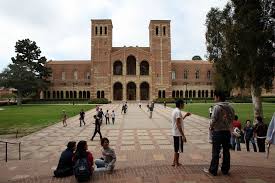The Trump administration and Republican-controlled Congress have significantly impacted federal education policy in just six months, introducing both lasting changes and considerable unpredictability. Under Secretary Linda McMahon, the U.S. Department of Education has implemented drastic reductions, cutting approximately half of its staff and withholding almost $7 billion in grant funding for programs such as before- and after-school initiatives, teacher training, and services for English language learners, pending further review.
The recent legislation, dubbed "One Big Beautiful Bill," signed into law on July 4, imposes new obligations on the Department of Education. One noteworthy provision is the introduction of a federal school voucher program, allowing students to use vouchers for private secular or religious schools and qualifying education expenses. While supporters believe it empowers parents in choosing their children's schools, critics argue that such programs could deplete resources from public schools as funds follow students who opt for private schooling.
The legislation introduces a federal program to reward charitable donations to Scholarship Granting Organizations cSGOsc with a dollar-for-dollar tax credit, aimed at providing scholarships for various educational expenses. Unlike earlier voucher programs, this new initiative extends eligibility to households earning up to 300% of the local median gross income, potentially costing the government billions in lost tax revenue over the next decade.
Medicaid, a significant source of funding for K-12 schools that supports low-income students, faces changes under the new law. With stricter eligibility requirements and a national work requirement, the bill is estimated to reduce federal health spending by about $1 trillion over a decade, potentially leading to 12 million individuals losing health coverage.
Furthermore, the legislation impacts federal student loan policy by resetting loan limits for graduate students and parents using PLUS loans. Borrowing caps have been revised, affecting the affordability of graduate programs and altering repayment options for borrowers, which could result in confusion among current and future loan holders.
Pell Grants, crucial for assisting low-income students in college, see expansions in the bill, aligning eligibility changes with job-training programs and addressing the existing Pell Grant shortfall. Additionally, the legislation links access to federal student loans for colleges with the earning potential of their graduates, aiming to incentivize institutions to provide valuable education that leads to higher earnings post-graduation.
The bill introduces accountability measures for colleges, connecting loan access to graduates' income levels. Institutions with low-earning graduates might lose access to federal loans, a move resembling the gainful employment rule from previous administrations. Furthermore, colleges with substantial endowments will face increased tax rates under the legislation, with higher rates applied based on the institution's endowment size.
In conclusion, the recent federal education legislation presents a mix of opportunities and challenges for various stakeholders in the education sector. While proponents highlight increased choices for parents and students, critics express concerns about potential negative implications on public school resources and students' access to essential services. The long-term effects of these changes remain to be seen, as states and educational institutions navigate the evolving landscape of federal education policy.


